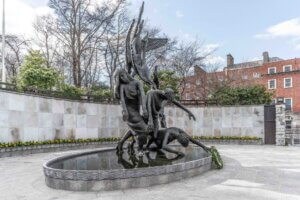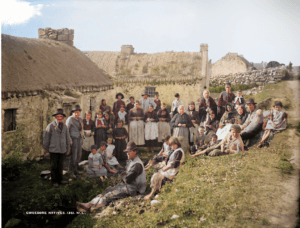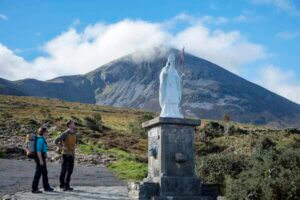In Ireland, women have always played a pivotal, if sometimes unrecognized role, in the country’s development over the years.
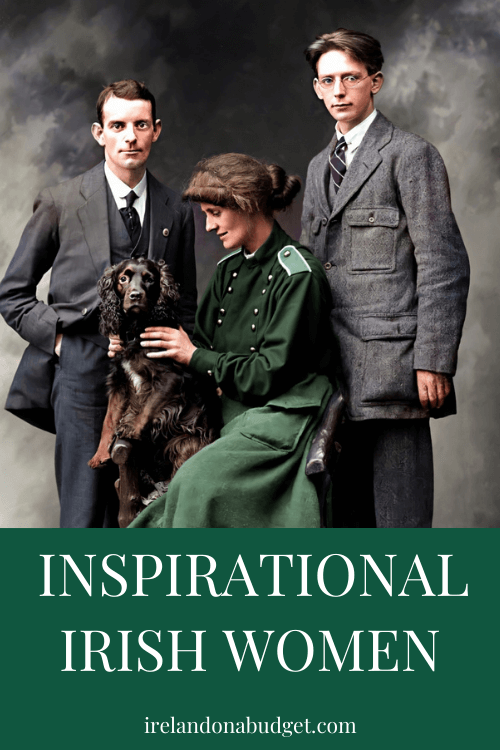 This post and page contain affiliate links and I may earn compensation when you click on the links at no additional cost to you.
This post and page contain affiliate links and I may earn compensation when you click on the links at no additional cost to you.
In pre-Christian Ireland, women actually had more power than any other time in early Irish history.
The Brehon Laws, which are Ireland’s earliest legal system, has a reputation among modern-day scholars of being quite favorable to women, with some describing the laws as providing equal rights for both sexes.
The ancient laws consisted of accumulated decisions handed down by Brehons or judges, who could be either men or women.

Some of the laws were even recorded in the earliest Christian texts in Ireland.
The Brehon Laws continued to be somewhat operational in Ireland until the early 17th century, at least in Gaelic areas of the country.
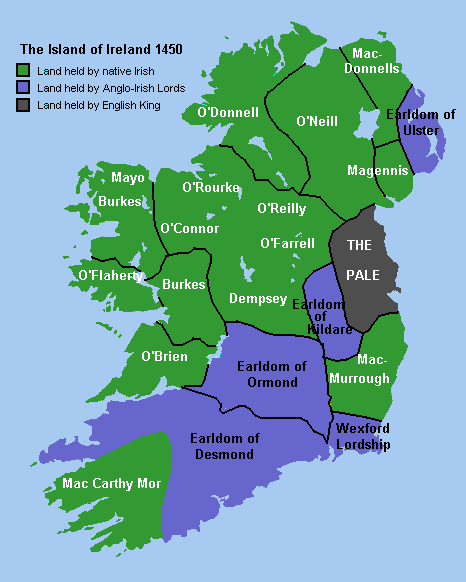
By the time Elizabeth I came to the throne, they were considered by many, especially in areas of Ireland’s Pale (on the east coast) to be old-fashioned and unreasonable.
They were consequently banned by the English and Ireland slowly came under the rule of English Common Law.
By clicking on the Amazon link below, I may earn a small commission from the Amazon Associates Program. However, you will not incur any additional costs by doing so.
It was under this ancient legal system that the first of the 5 inspiring Irish women highlighted here was born.
Brigid of Kildare
Most will associate Brigid of Kildare, more commonly known as St. Brigid, Ireland’s female patron saint, with the reed crosses made in her name.
The real St. Brigid, known for her generous nature, was much more of a powerhouse than most people imagine.
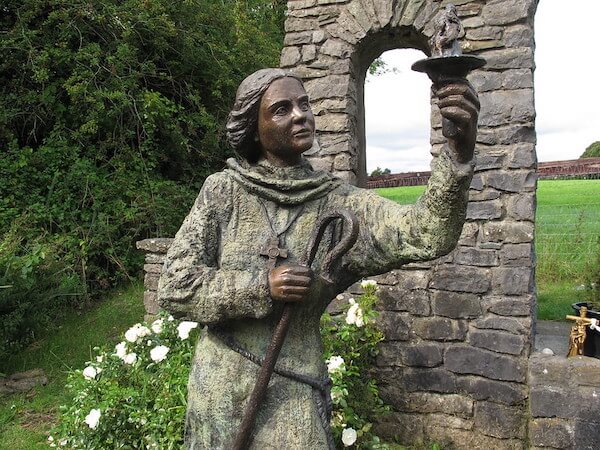
Born in Dundalk in 450 A.D., she is actually credited with establishing two monasteries in County Kildare, one for men and the other for women.
By clicking on the Amazon link below, I may earn a small commission from the Amazon Associates Program if you decide to buy something on the site. However, you will not incur any additional costs by doing so.
Read Brigid of Kildare: A Novel
The former Kildare Abbey, no longer there, is the place where Brigid created her first monastery, later establishing a small oratory, which expanded into a large double monastery serving both sexes.
The site in its day was an important center of religion and learning, developing into a kind of cathedral city.
All that remains of this site today is a round tower.
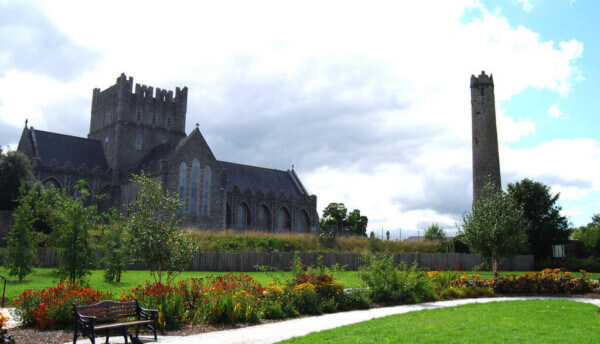
However, you’ll find the beautiful St. Brigid’s Cathedral nearby, which honors the saint, as well as a heritage trail where you can learn more about Brigid and her good work.
Brigid is also credited with founding a school of art that focused on metalwork and illumination.
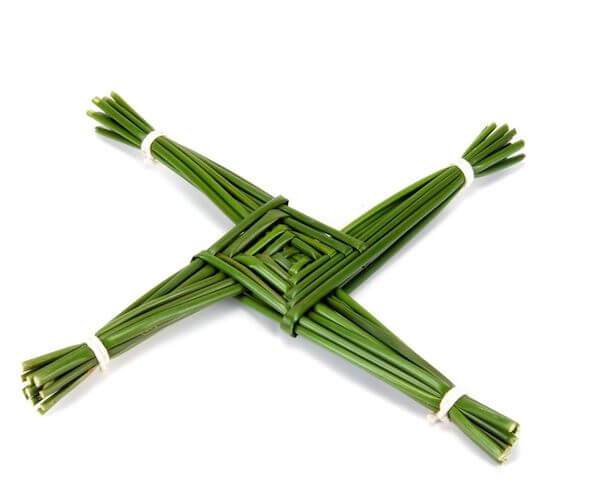
In fact, the Book of Kildare, similar to the Book of Kells, was created there.
Unfortunately, it disappeared during the Reformation and has never been recovered.
Some experts also believe that Brigid was an expert dairywoman and brewer.
Indeed, Brigid is known as the patron saint of many things and people, including midwives, newborns, Irish nuns, fugitives, blacksmiths, dairymaids, boatmen, chicken farmers, cattle, scholars, sailors, and who knows how many more!
She most definitely deserves the pedestal that she has been given.
See Ireland in 2024 with Aer Lingus Vacations
Queen Maeve of Connaught
A heroine of pre-Christian Ireland (sometime around 50 BC), some might wonder if Queen Maeve ever existed.
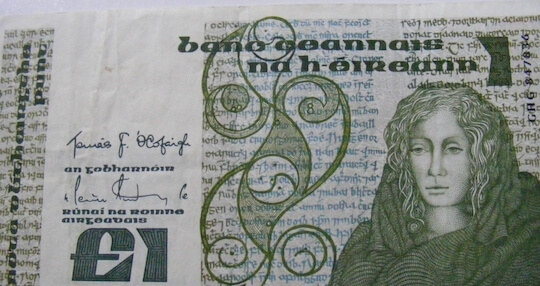
However, if you were to read the ancient text titled, “Tain Bo Cualing,” which translated into English means “The Cattle Raid of Cooley,” you would be convinced that yes, she did indeed exist.
The narrative was copied by monks in the 8th century and is based on a period of Irish history when high kings ruled the land.
The story concerns a conflict between the ruler of Ulster and Maeve over the possession of the brown bull of Cooley.
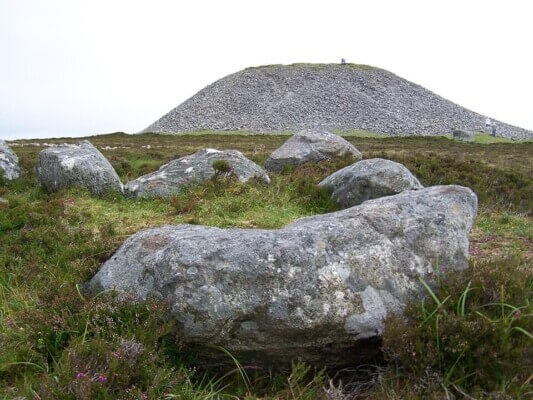
Maeve was responsible for leading the warriors of Connaught into Ulster to claim the famous bull. She successfully captured it after a bloody battle.
Reported to have had five husbands, this steely woman ruled over Connaught for over 60 years.
She is reputedly buried standing upright at the top of Knocknarea in County Sligo, a popular tourist attraction.
Read More: Prehistoric Rock Art Found on Sligo Portal Tomb
Grace O’Malley (Granuaile)
No list of influential Irish women could leave out the legendary Grace O’Malley, otherwise known as “The Pirate Queen.”
Born into the powerful O’Malley clan of Co. Mayo, Grace was born on Clare Island in 1530.
Always a tomboy, Grace is known to have cut her hair after her father refused to allow her on a voyage in case her long hair would get caught in the ropes.
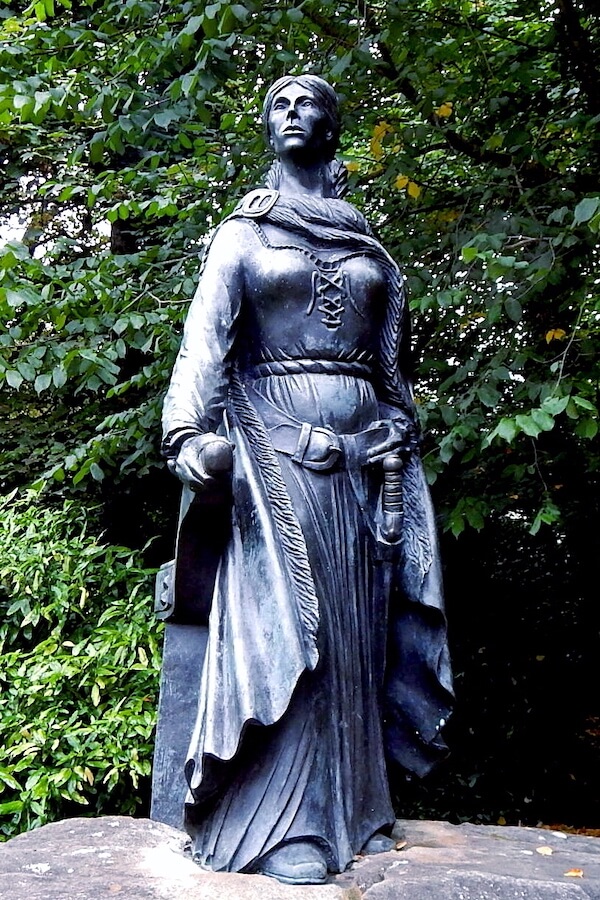
Interestingly, Grace is not mentioned in any of the Irish annals, which were typically created by monks to determine feast days and notable political events.
Most of the documentary evidence of Grace’s life and escapades have been drawn from English sources, in particular the 18 “Articles of Interrogatory” questions that she posed to Queen Elizabeth I.
Grace is also mentioned in the English State Papers and in other such documents.
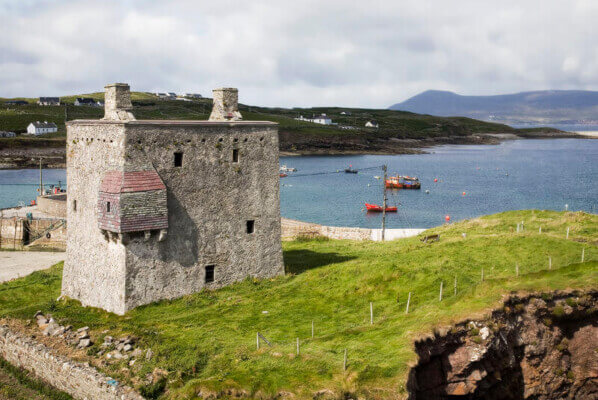
During Grace’s early years, King Henry VIII reigned and despite being Lord of Ireland, he left the Gaelic clans pretty much to their own devices.
That would change over time, of course, with the Tudor conquest of Ireland.
Truly unusual for her time, Grace has been known for her determination and bravery. An attack against an enemy clan, the MacMahon's, was swift and merciless, with Grace taking the castle in Ballycroy, Co. Mayo, by storm.
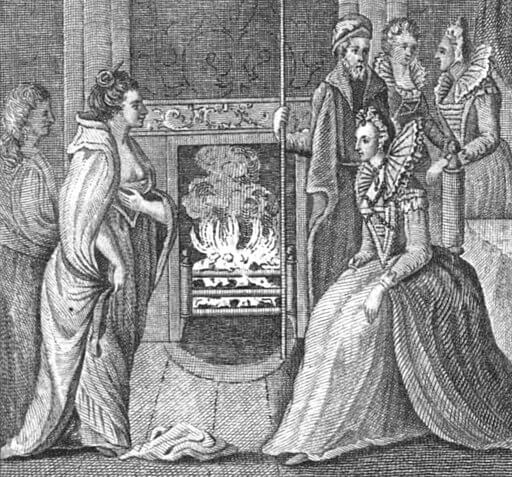
It was Grace’s meeting with Queen Elizabeth I, however, that shows her true audacity.
After the capture of her two sons and half-brother, Grace petitioned Elizabeth for their release.
The story goes that Grace refused to bow to the queen because she didn’t recognize her as the “Queen of Ireland.”
At one point, she sneezed during the meeting and a handkerchief was given to Grace by one of the noblewomen in Elizabeth’s court.
The onlookers were horrified.
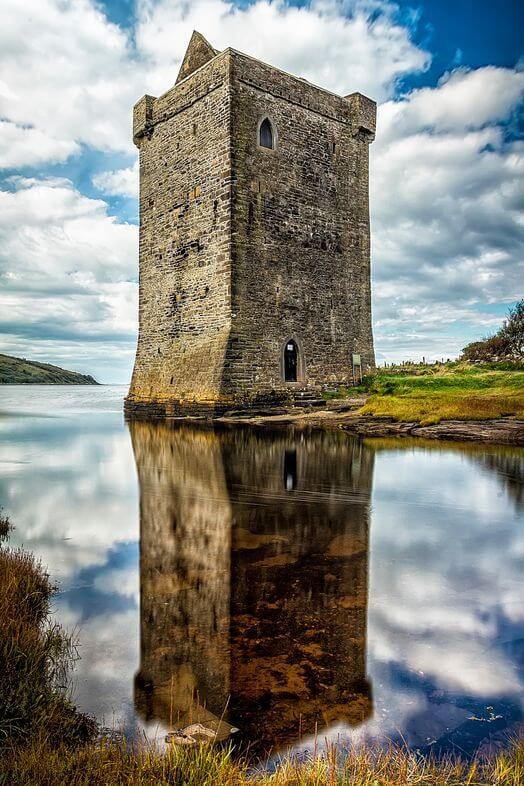
After using it, Grace threw the tissue into the fire, claiming that in Ireland a used handkerchief was considered dirty and always thrown away.
The two powerful women conducted their conversation in Latin given that Grace spoke no English and Elizabeth did not speak Irish. In the end, the pair came to a somewhat amicable agreement.
In her day, Grace commanded three galleys, 20 ships, and over 200 men. Both she and Elizabeth died in the same year, 1603.
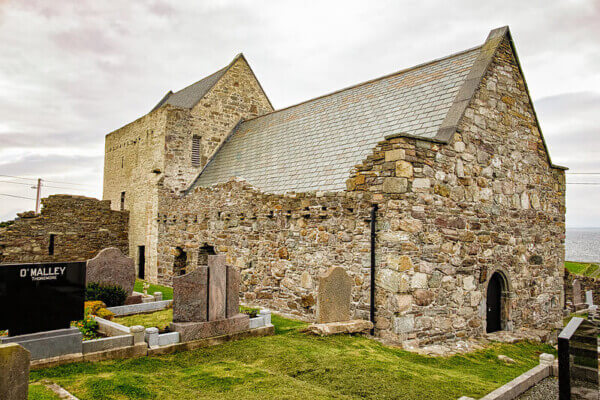
She is buried at Clare Island Abbey.
Constance Georgine Markievicz
Perhaps the most famous of Ireland’s female revolutionaries, Constance Georgine Markievicz was born into Ireland’s landed gentry but the common people of Ireland and their efforts to gain freedom were always close to her heart.
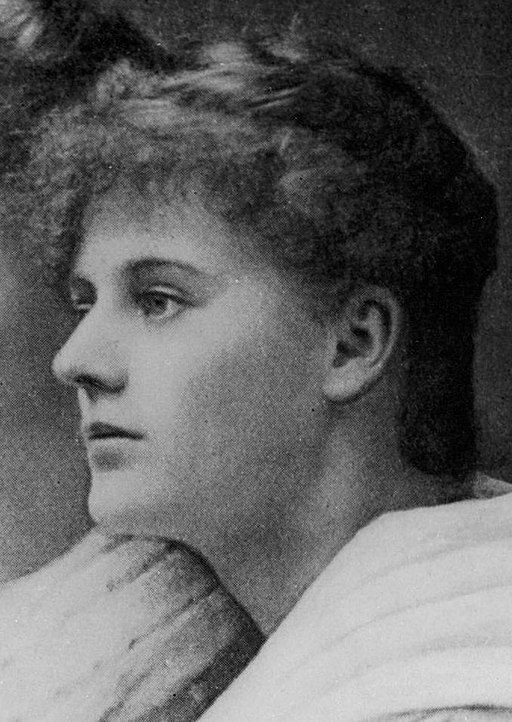
She was also a staunch supporter of a woman’s right to vote.
She was born in London in 1868 to the Arctic explorer and adventurer Sir Henry Gore-Booth, who was a landlord in North Sligo and owner of Lissadell House, a popular tourist attraction.
Her mother was Georgina Gore-Booth.
While Constance’s life could have been filled with parties and all of the other niceties granted to upper-class young ladies of the 19th century, she instead filled her mind with politics and finding ways to help those less fortunate than herself.
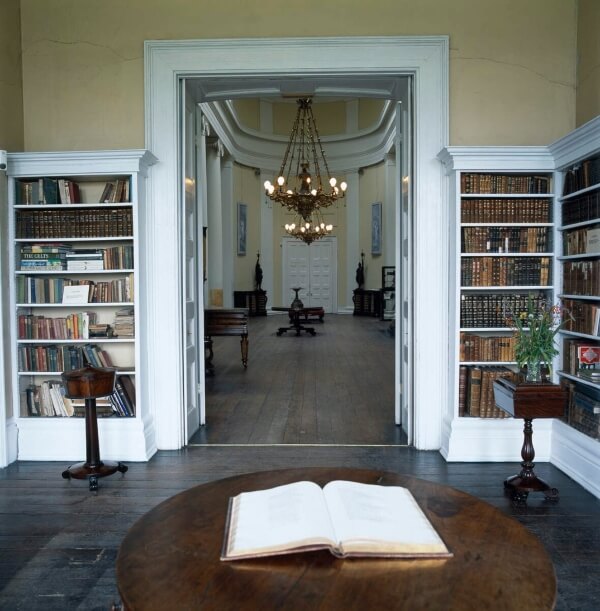
In 1908, she became involved in nationalist politics in Ireland, joining Sinn Fein, the Irish democratic and socialist party that still plays a major part in Ireland’s current political landscape.
Constance was jailed for the first time in 1911 for speaking at an Irish Republican Brotherhood demonstration.
She was also imprisoned following the 1916 Rising, but unlike her male counterparts who took part in the event, she was spared execution.
Constance has the distinction of becoming the first-ever female MP elected to the House of Commons in 1918.
In addition, she was elected Minister for Labor in the First Dáil, the first parliament of the newly created Irish Republic, and subsequently, the first female cabinet minister to be elected in Europe.
Maria Edgeworth
Forget Jane Austen.
Maria Edgeworth was one of the best Regency fiction writers of her day.
Sadly, most people are unaware that this very talented young woman sold more books than the more renowned Austen.
In fact, Maria was such a prolific writer of adults’ and children’s books, that she is considered a leading figure in the evolution of the novel throughout Europe at the time.
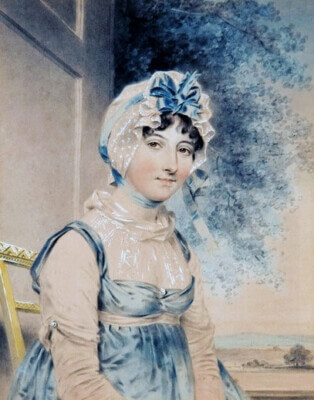
Born in England in 1768, Maria relocated to her father's estate in Edgeworthstown, Co. Longford, after her mother died when Maria was only 5 years of age.
Throughout her life and until her father died, she would act as his assistant in managing the estate.
It was from Edgeworthstown House (now a nursing home) that she did most of her writing.
Many of Maria's works described the plight of the Irish, as well as women’s issues, politics, and education.
While her novels certainly celebrated Irish culture, they also highlighted the obvious Anglicanization of Irish society.
Ahead of her time, Maria believed in the value of education for both individual improvements and as a way to enhance Ireland's lot in general.
She believed that boys and girls should be educated equally and together and that women should only marry the one they chose.
Interestingly, Maria never married.
In addition to being an accomplished writer, Maria was also a generous person at heart, working for the relief of the many famine-stricken people living in her local area during Ireland’s Great Famine.
By asking for help from the Quaker Relief Committee in the United States, Maria was able to get much-needed aid for the poor and destitute.
Find out more about the author at the Maria Edgeworth Centre.
Are there other famous Irish women that you admire? If so, let me know in the comments below.


